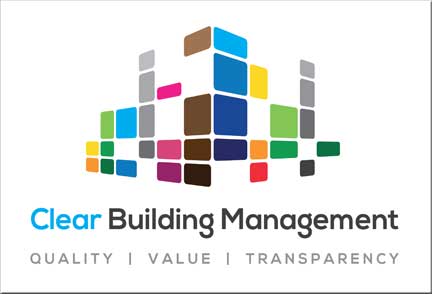
The Leasehold Knowledge Partnership has posed the question of whether the leasehold system could survive the sort of scrutiny it would receive after thousands of blocks of flats were deemed to be covered in combustible cladding.
To date, this is costing taxpayers £1.6 billion to put right.
Earlier this month saw the publication of the government’s Reformed Building Safety Regulatory System, itself a response to consultation held last summer following the report by Dame Judith Hackitt.
The sums of public money involved are astonishing, and the government is trying very hard to say there will be no more of it. Thereafter, “building owners” are on their own.
“Building owners remain legally responsible for ensuring the safety of their buildings and residents. Consequently, the Government expects building owners to act responsibly and pay for the remediation of their buildings now and in the future regime. We continue to support building owners and industry in ensuring that unsafe materials are remediated as quickly as possible, including by making available £1.6 billion of grant funding for the removal of unsafe cladding systems from existing high rise buildings.”
So what, leaseholders might ask: after the grant money is paid out – and it only applies to buildings more than 18 meters high which “pose the highest risk” – freeholders will demand the money off leaseholders again, under the terms of the lease. Legal actions will resume in the property tribunal, adding to the five or so rulings already that agreed that leaseholders must pay for cladding remediation.
But it is interesting that government is emphasising that “building owners” – developers, housing associations, enfranchised sites and freehold speculators in residential freeholds – should pay.
Regarding freehold owners in the private sector, in what sense are they actually “building owners” if they do not do any paying and seem to have no direct interest in the physical state of the building? How are they really the “long-term custodians”, to use the term lobbyists have adopted to describe ground rent investors?
Real “long-term custodians” are build-to-rent organisations, or retirement community operators, which build sites, rent them out on long and short-term leases, but also pay for their upkeep for the long-term. It is a clearly understood relationship: owners are owners, and tenants are tenants.
Government may think that residential freeholders, whose asset might only be worth 1-3% of a building, are parasitical by comparison. Yet they will be making decisions to forfeit people’s homes who cannot afford to pay for cladding remediation.
Leaseholders in many sites – those under 18 metres; those with additional bills such as waking watch – are going to be ruined by the cladding bills. Young, highly mortgaged, with uncertain employment post-Coronavirus … many are going to see their dreams of home-ownership swept away.
Is government really going to stand back and let this happen, while at the same time doling out public money to shore up freehold owners who are murky private equity interests hiding their beneficial ownership in tax havens?

It is going to be a courageous housing minister who defends these “building owners” under these circumstances.
There are other issues in the report that are curious from the point of view of existing leasehold governance.
The government intends to establish a national Building Safety Regulator with the task of “enforcing a more stringent regulatory regime”.
The aim is to “help to create a culture change and a more responsible building industry, from design, through to construction, management and refurbishment.”
Every building owner – including anonymous ones in the Cayman islands – will have to have an Accountable Person, responsible for understanding the regulations, who will appoint a Building Safety Manager, who will be approved under a system established by the national Building Safety Regulator.
What will interest leaseholders is the emphasis the Reformed Building Safety Regulatory System places on residents.
At present, leaseholders are used to being ignored by the freeholder and his appointed managing agent. Efforts to unite the leaseholders are frequently frustrated, residents’ associations are not recognised and efforts to enfranchise or exercise right to manage are thwarted, by fair means and foul.
Here is an example:
And here:
But here in the Building Safety Regulatory System the voice of residents is actively solicited.
“Under the more stringent regulatory regime, residents will have a stronger voice to ensure that their views and concerns are not ignored. They will be entitled to receive a core set of information about the protections in place to keep their building safe and have new rights to request access to detailed safety information where appropriate.
“The Building Safety Manager will be required to proactively engage and communicate with residents through a mandated Resident Engagement Strategy. This will make sure that residents are kept informed, are able to participate in the decision-making regarding the safety of their building and understand their safety responsibilities.
“The Building Safety Manager will also be required to have a clear complaints procedure in place so that residents can raise issues about the safety of their home. Where a concern cannot be resolved satisfactorily through this complaints procedure, or where there may be a significant risk to life, the resident will be able to escalate their complaint directly to the new Building Safety Regulator for action.”
These points are later repeated in abbreviated form in the report:
“Residents will have new rights to receive information about the safety of their building;
- be able to request access to appropriate detailed safety information;
- be involved in decisions about the safety of their building; and
- have their complaints about safety dealt with quickly and effectively.
“They will also have clearer responsibilities in relation to playing their part in mitigating risks in their building.”
This is quite a departure from normal leasehold divide-and-rule practices, where leaseholders are discouraged from “participating in the decision-making”.
LKP had some hopes that the Accountable Person might actually be the beneficial owner of a freehold, but it will be a nominee, such as an executive of the specialist companies that gather the ground rent and permission fees income.
“… ultimate accountability will reside with the Accountable Person for assessing and managing fire and structural safety risks
“For most buildings in scope the identity of the Accountable Person will be clear. As proposed in the consultation, the Accountable Person will be the individual, partnership or corporate body with the legal right to receive funds through service charges or rent from leaseholders and tenants in the building.”
All these measures aim at tightening up the safety regime of high-rise buildings and accountability.
There is even reference to the “golden thread” of information about a building, which must be maintained:
“Duty-holders will be responsible for creating and maintaining the golden thread of building information related to fire and structural safety. The golden thread will be held digitally to ensure that the original design intent and any subsequent changes to the building are captured, preserved and used to support safety improvements.”
And it is good to see that there is provision to protect whistleblowers who report their building owner employers who shirk their obligations:
“The Building Safety Regulator will also be made a prescribed person under the Public Interest Disclosure Act 1998. This will afford workers protection from detrimental treatment or victimisation from their employer when making disclosures in the public interest; more commonly known as whistleblowing protection.”
The government is very pleased that the “overwhelming majority of consultation respondents agreed that residents should be empowered partners in the more stringent regulatory regime and supported proposals to ensure that residents are better able to challenge where they feel building safety is not being properly managed”.
This is gratifying, although one hopes government noted that that means some did not support this, and hopefully it is minded to ask why not.
- The new regulations only apply in England and to buildings above 18 metres or six storeys





 Mike Amesbury: Young, highly mortgaged, often shared owners, with now uncertain employment … are facing homelessness and ruin over cladding
Mike Amesbury: Young, highly mortgaged, often shared owners, with now uncertain employment … are facing homelessness and ruin over cladding






















Sooner or later any sensible government will realise the additional strata of a freeholder only complicates home ownership and building maintenance. If it were commonhold, the owners would employ a managing agent (whose obligations would be in their interests) and that company would have a designated person as part of their structure – a nominee. It’s a proven model ROTW. Hanging on to the feudal nonsense is only delaying the inevitable.
No mention of RTM companies who have taken on the custodial role in order to shake off a bad managing agent and now find themselves trying to deal with cladding issues. Yes, we have to take the rough with the smooth, but some recognition by the government of the predicament would be welcome. Our MP just offers to seek advice from colleagues and by the time she reverts, everything has changed again!